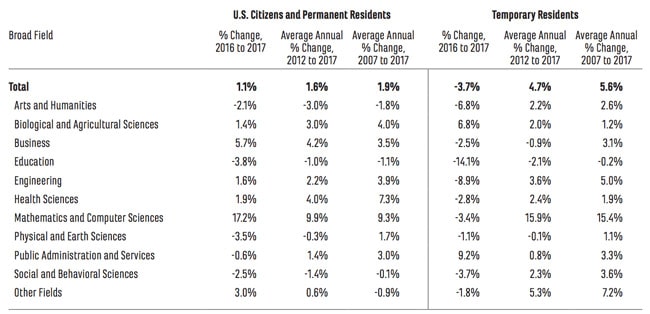Foreign graduate enrolment in the US dips for second year in a row
Foreign students occupy nearly one in five (18.5%) seats in American graduate schools. But their numbers started to decline marginally in 2016 and now the latest data from the Council of Graduate Schools (CGS) shows that 2017 was a second consecutive year of decreasing international student numbers.
While first-time graduate enrolment for domestic students increased modestly between 2016 and 2017 (up by 1.1%), CGS reports that foreign commencements in US graduate schools fell by nearly 4%. The pattern is similar with respect to total enrolment where domestic numbers grew by just over 1% and international student numbers dropped by 2.4%.

The India factor
As the preceding table indicates, the sharpest declines were registered in the humanities, education, and engineering fields. CGS does not break down enrolment changes by sending market in this latest report, but a separate survey report released earlier this year highlights that application volumes were especially depressed for Indian students (down 15% between fall 2016 and fall 2017). The significance of this is that India, along with China, accounts for more than half of all foreign enrolment in US graduate schools. Any material change in the growth trends or one of these key markets will, as we see in these latest figures, have an impact on overall application volumes, commencements, and enrolment. For additional background, please see:
Most Recent
-
ICEF Podcast: Engine of growth: The true value and impact of the international education sector Read More
-
Global higher education enrolments expected to grow through 2035, but new challenges must be addressed Read More
-
Canada: A case study of immigration policy impacts on postsecondary institutions and the wider economy Read More
















